
[187] Jacobaea vulgaris, (Common) Ragwort
Jocobaea maritima, Silver Ragwort
Introduction
Jacobaea vulgaris, Ragwort, is a common wildflower sometimes considered as a weed. Its close relative Jacobaea maritima, Silver Ragwort, is a popular garden plant often used in hedges.
- Jacobaea vulgaris, still often known as Senecio jacobaea, has many common names apart from Ragwort and Common Ragwort. In the USA it may be called Tansy Ragwort or Tansy although it does not look similar to what we call [337] Tansy.
- Jacobaea maritima, often known by its old name Senecio cineraria, is also sometimes known as Dusty Miller – as are several other completely unrelated plants with silvery leaves.
Taxonomy
Kingdom – Plants
Division – Vascular Plants
Class – Angiosperms (Flowering Plants)
Order – Asterales
Family – Asteraceae
Subfamily – Asteroideae
Supertribe – Senecionodae
Tribe – Senecioneae
Genus – Jacobaea
Scientific Names – Jacobaea vulgaris, Jacobaea maritima.
Both were originally classified as Senecio and are still known sometimes by synonyms.
Jacobaea vulgaris is a wild plant. Jacobaea maritima has several cultivated varieties.
Name
Ragwort is derived from the ragged shape of the leaves.
The Latin senecio means either an old man or the plant groundsel (now many species within the genus Senecio.) I can’t find a derivation for Jacobaea, (which was originally a species epithet,) but it could be named after someone called Jacob or James.
Description
Within the Aster family, the tribe Senecioneae has about 3 000 species with a wide variety of forms. They are responsible for more livestock poisonings than all other plant species.
A third of its species come under the genus Senecio, which has undergone many revisions in recent years and used to contain these two species of Jacobaea.
- Common Ragwort is a fairly small typical Aster, normally a biennial. Its flowers are bright yellow, borne in large clusters and produced through most of summer and autumn.



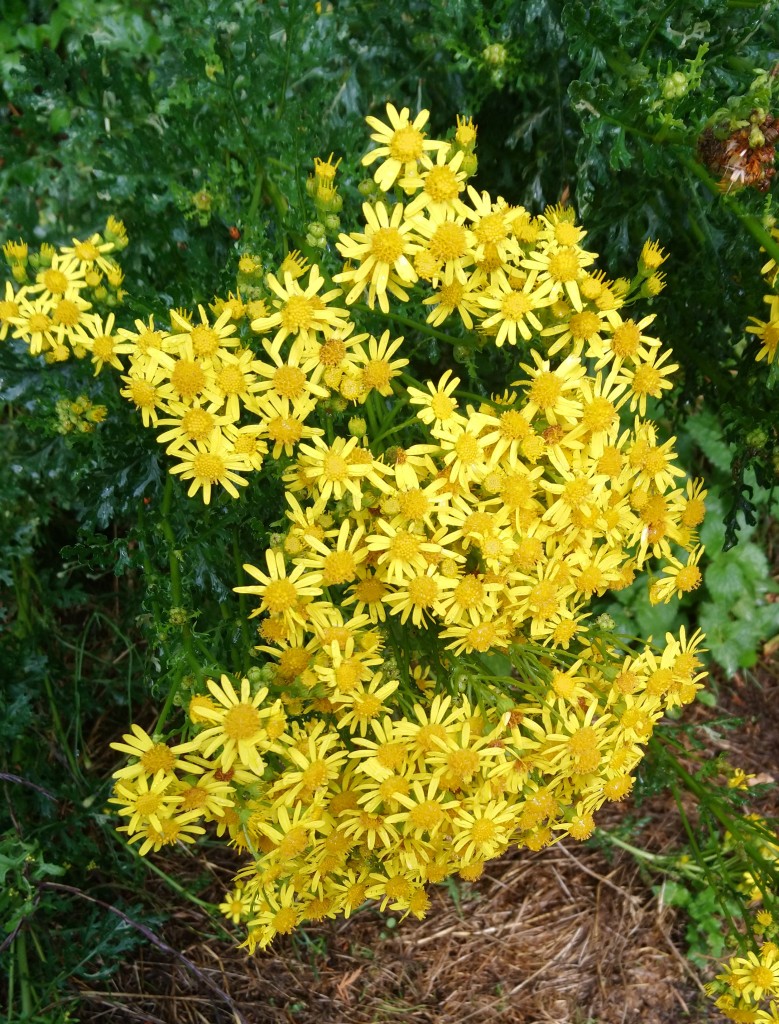
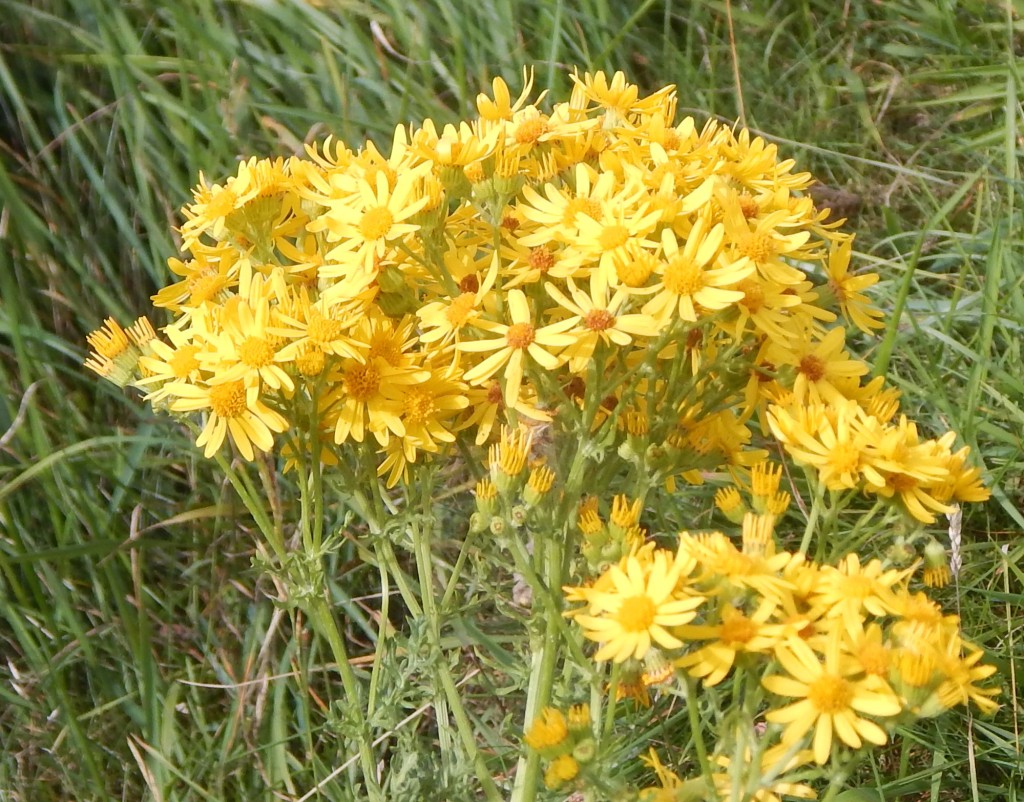
It is poisonous to [130] Horses and [054] Cattle but rarely to a significant degree. Horses avoid it because of its taste.
- Silver Ragwort is a much more robust plant, a bushy perennial with woody stems at its base. Its attractive leaves are feather shaped and silvery. As you will know by now the silvery effect comes from tiny grey-white hairs. (See, for example [037] Silverweed.)

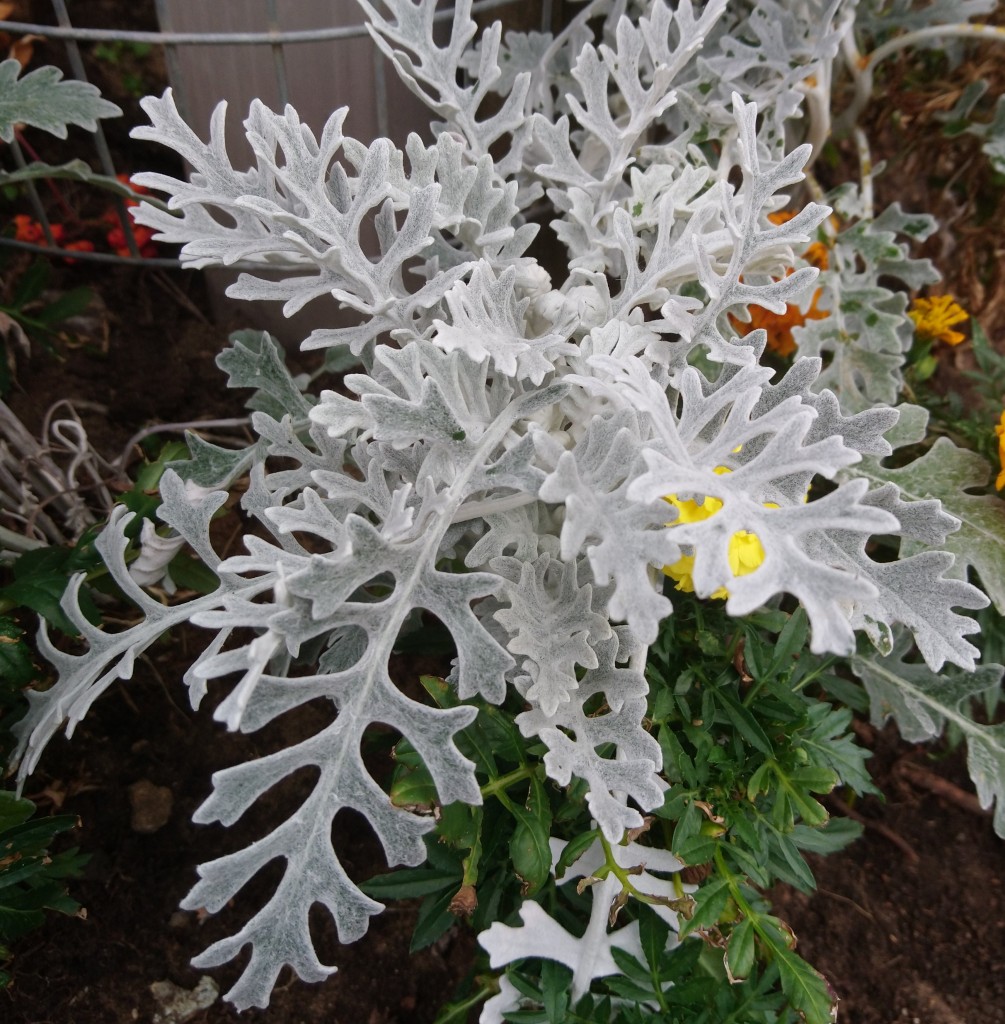
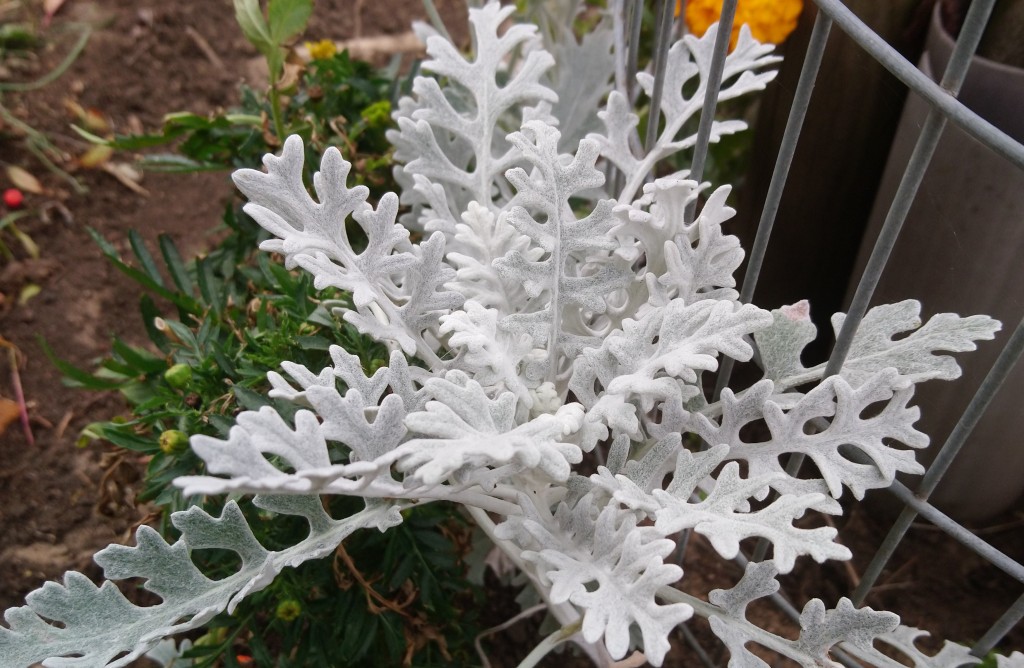
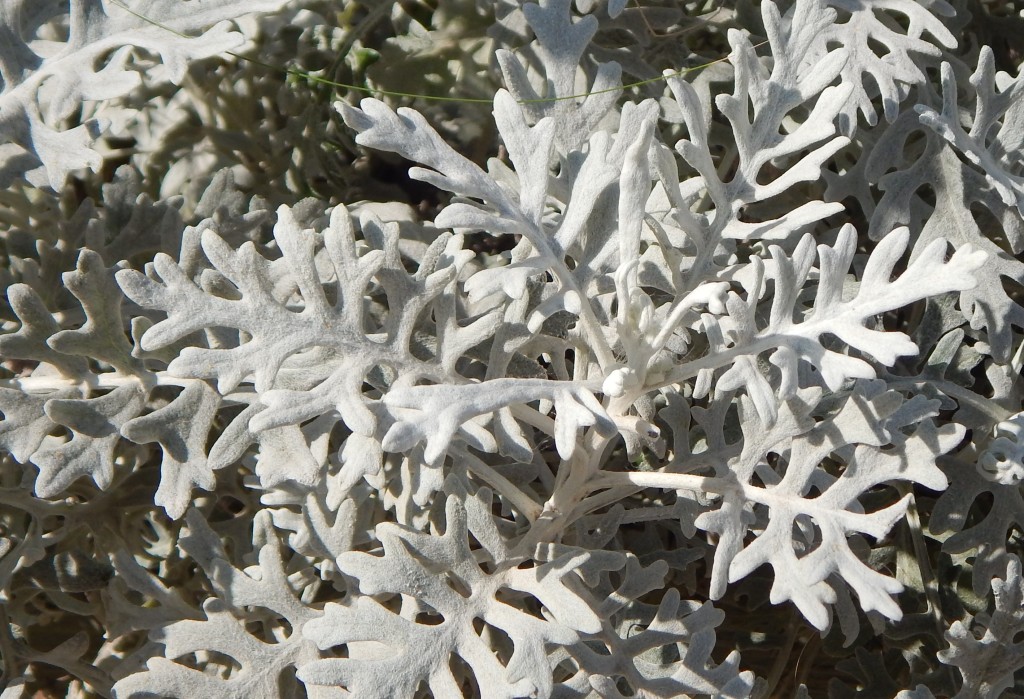
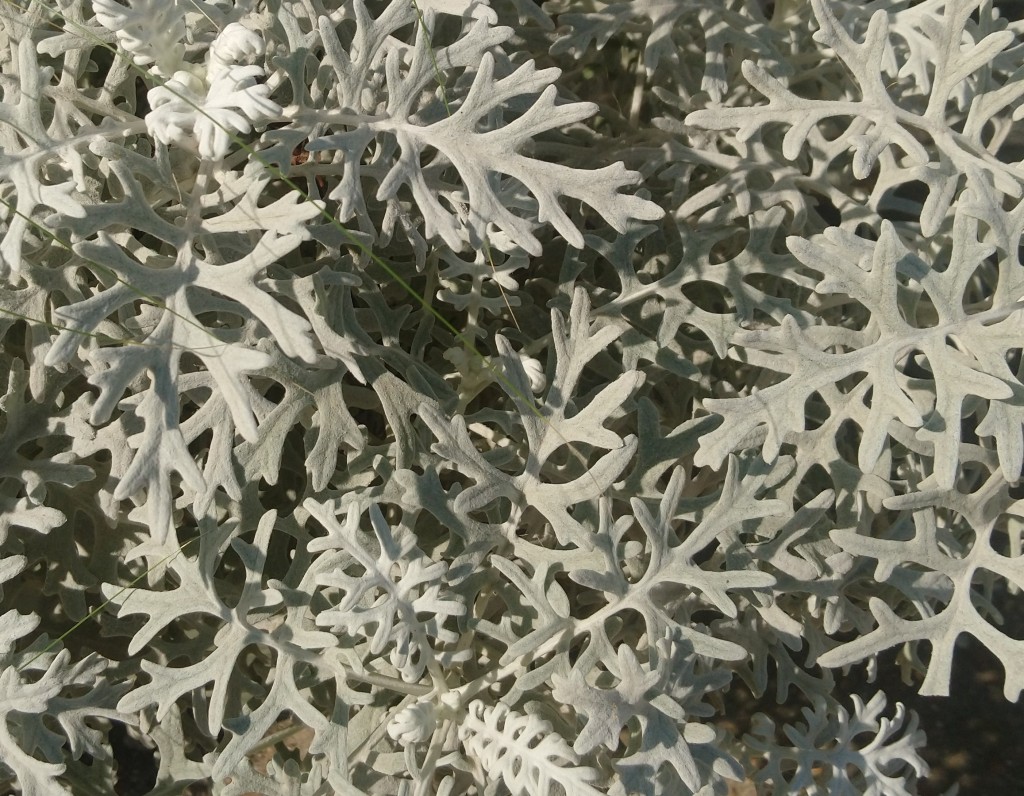
Flowers are similar to Jacobaea vulgaris.

Habitat and use
- Jacobaea vulgaris is common and widespread in northern Eurasia. It has been introduced and naturalized in the USA and many other countries, where it is generally regarded as a noxious weed.
In Britain it is a typical wildflower or weed and seems to grow almost everywhere – on meadows and open grassland and also on roadside verges. It is the natural host of many moths and other insects – in particular the Cinnabar Moth, which takes its scientific name, Tyria jacobaeae, from Ragwort.
Its leaves have traditionally been used to produce a green dye and the flowers have been used for yellow, orange or brown dyes.
- Jacobaea maritima is native to the Mediterranean but widely cultivated as an ornamental plant. I see it as a common hedge plant, where it is trimmed so that the leaves are much more prominent than any flowers. Several cultivars are available.
Other Notes
In the UK, Jacobaea vulgaris is the host to at least eighty species of insect, many of which feed on it exclusively. A further hundred or more species feed on its nectar. These include some very rare species.
See also
You know about the Aster family and in the UK most of its species have yellow flowers. It is worth looking out for [350] Cinnabar Moth, which has an easily recognizable caterpillar.
